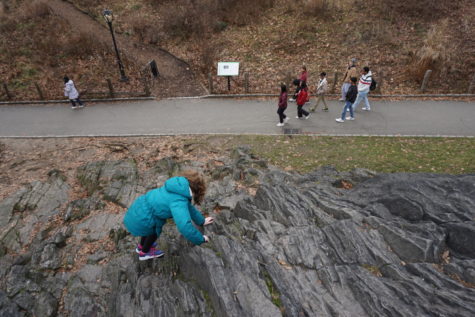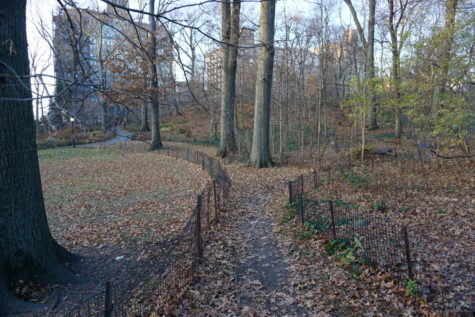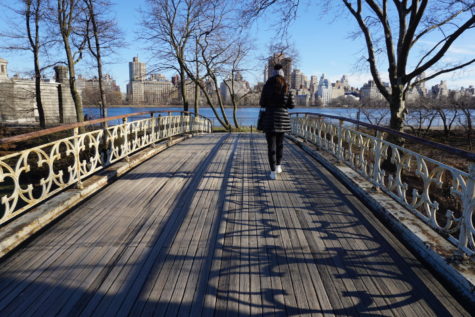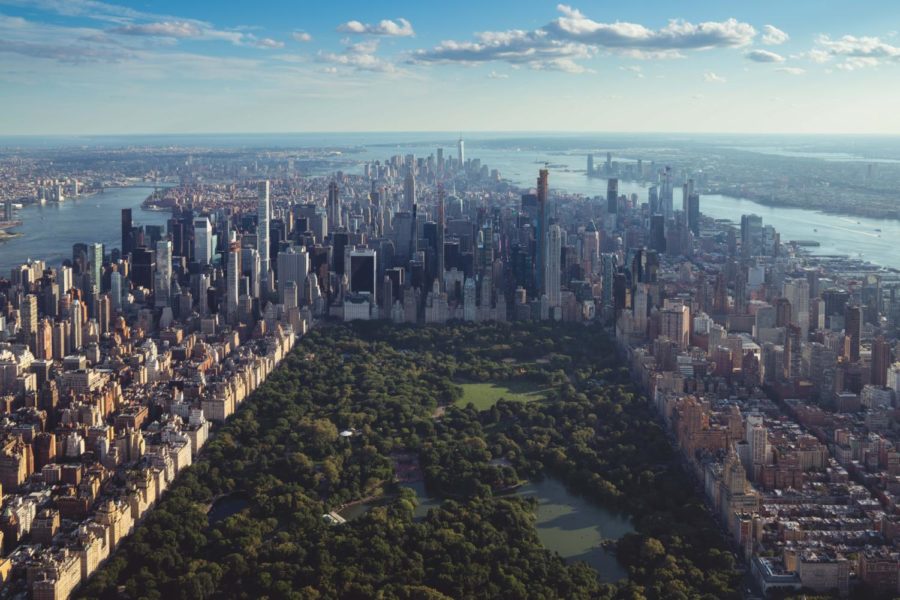The History of Central Park
Despite being one of the most popular parks in the country, the foundations of Central Park are widely unknown.
An impressive 843 acres of green carved out of the middle of Manhattan, Central Park is the largest public park in the borough and the fifth largest in New York City.
Who made Central Park? Before clicking on any websites, Google automatically answers “Frederick Law Olmsted” in large bold letters. A different answer emerges, however, after sifting through the park’s dense Wikipedia page: more than twenty thousand engineers, architects, and builders, five of whom died in the process. On the surface both options are true; Olmsted designed the park and the twenty thousand workers contributed to engineering and manual labor during the fifteen years of initial construction that ended in 1876.
But although these answers are easily found, they only expose a small fraction of Central Park’s founding history. Google condenses the many conflicting opinions, ideas, and motivations that led to the final location and layout of the park and credits them to one man, Olmsted, while ignoring the effects of the park on marginalized communities. In reality, Central Park was physically shaped by laborers carrying out the decisions of the upper class just as much as it was historically influenced by the sacrifices of immigrants and African American communities. Quick internet searches are too simplistic to fully describe a place so important to the spirit and past of New York City, as well as the everyday life of New Yorkers today.
Central Park originated in the midst of an evolving Manhattan. During the colonial period, Native Americans were forced out of their homes and the island split between shipping ports downtown and forest and farmland uptown. Later, downtown’s nineteenth century surge of people, industry, and pollution caused the wealthy to escape north. Limited space quickly pushed the working class upwards as well. Formerly rural neighborhoods quickly expanded to host a crowded population with a skewed working-to-upper class ratio.
In the middle of all the turnover lay central uptown. It would soon transform from undesirable rocky, swampy land to one of the most famous parks in the country. Until then, it remained an area mostly home to poor communities and ignored by the rest of the city.
Even though Manhattan’s population consisted mainly of the working class, the upper class used their substantial political influence to achieve their own goal of molding New York to traditional European standards. Instead of looking at their city where many immigrants were suffering from horrific working and living conditions, lack of sanitation, and inadequate wages, the upper class looked across the Atlantic and saw England’s Birkenhead park and France’s gardens of Versailles. What New York needed most, it seemed, was a park.
Local newspapers offered practical arguments besides simply following European trends. A large park would increase health, encourage an appreciation for nature, and provide space for leisure activities that would ideally replace drinking and gambling. Newspapers aimed towards immigrant populations agreed that a park was needed but added that more people would benefit from many small parks dispersed throughout Manhattan. However, these proposals were never seriously considered because those in power prioritized size and grandeur over accessibility.

The location debate narrowed down to two places. Senator Beekman suggested the Upper East Side property Jones’ Wood because it was already professionally landscaped, bordered a river, and, unofficially, because Beekman’s own nearby land would dramatically increase in value. Senator Morgan proposed a park in central uptown. One person compromised by suggesting in a New York Times editorial that both the East Side and central options be combined into one huge park, arguing that the irregular shape should not be a concern because London’s parks were “strung together like deformed turnips.”
These locations all exposed bias in the upper class’ definition of a ‘public’ park. “Both sites are at present too remote to be reached by any who cannot afford to pay for some sort of conveyance,” pointed out a New York Times letter to the editor in 1853, “and thereby, the very classes for whom it is most required are deprived of the enjoyment.” While true, this observation did not prevent both uptown park proposals from advancing to the legislature.
On June 21, 1853, the Beekman’s Jones’ Wood bill and the Central Park bill were introduced. Originally, only the Central Park bill was passed, but it later needed to be revised over a technicality. The two were brought back for consideration and both passed under the assumption that the decision between locations was postponed, and the bills only allowed the potential for each park to be built.
Meanwhile, Beekman had secretly changed his bill to require the city to take over Jones’ Wood. The owners, the descendants of a prestigious family, countered this in court and refused to give up their land. Although not the defining factor in the final park location choice, the 1,200 to 1,600 people already living in what would be Central Park were of a lower social status and had less influence than the Jones and Schermerhorn families. Just as Manhattan’s original Dutch colonizers viewed the Lenape as inferior and took over their land, its nineteenth century wealthy politicians took over the land of the supposedly “inferior” to make Central Park.
Once the location was set, the city needed to decide how to fund the new park’s construction. The park design competition set a budget of 1.5 million dollars. However, by the time Central Park was completed, it had cost 14 million dollars (not adjusted for inflation) – over nine times as much as originally planned and twice as much as the U.S. government paid for the state of Alaska. With this much money pouring into the park’s creation, New York needed to support the project with more than just taxes.
To compensate for the high price, Central Park was funded heavily by assessments. Nearby landowners paid a portion depending on how much their land was expected to rise in value. This policy was not a satisfying solution; many landowners complained that they were required to pay an obscene amount for land that was too far away to be positively impacted by the creation of the park. On the other hand, property owners bordering the park benefited greatly despite their assessments because the land increased exponentially in financial value and, even today, remains expensive.
Overall, the worst came not to displeased landowners surrounding the future park site but to the communities already established inside it that the government evicted in the mid 1850s. This change permanently reshaped central uptown, the effects still remaining one hundred and fifty years later when I walked into the park through the 85th street entrance. From the perspective of the early nineteenth century, it was unrecognizable. A wide road for vehicles was paralleled by a narrower pedestrian walkway. In between was a fenced-off section of grass, gravel, and faded orange and brown leaves.
I turned the curve of the path, a playground to my right and lampposts lining my left. A banner hung from one of them: HISTORY UNFOLDED HERE. Nearby, a bike zoomed by with a hiss of rubber on pavement. A metallic bang resounded as a child hurriedly jumped onto a slide.

This section of the park, spanning several blocks from West 82nd to West 89th street, used to be a majority African American neighborhood called Seneca Village. It was a haven amidst Manhattan’s prevalent racism and attacks against black churches, businesses, and schools. By 1840, Seneca Village was home to about 225 African and Irish Americans, unusual demographics for a segregated, pre-emancipation country. Nevertheless, it was a thriving community with three churches – AME Zion, African Union, and All Angels’ – as well as a cemetery and a school, one of few in the city.
Immigrant life in Seneca Village was better than downtown Manhattan. Whether the villagers lived in three-story houses or smaller homes, it was generally safer and cleaner than downtown tenements. Many people were also property owners, which was rare for black New Yorkers at the time.
However, disdainful newspapers and magazines reflected a different narrative. According to the opening paragraph of the 1873 Scientific American article “Central Park, New York City,” residents “lived in a state of primeval simplicity and dirt, in ricketty sheds… A more dreary and desolate neighborhood would be difficult to find.”
I wandered inwards, and the apartment buildings that now border the park slid temporarily out of sight. Off the road, a lonely sign rose out of dirt damp with melted snow. “The Wilson House,” it read, “an African-American family consisting of William Wilson, his wife, Charlotte, and their eight children…” I looked up. There was nothing but trees, grass, and, in the distance, a soccer class.
Close by was Summit Rock, the highest natural point in Central Park. The view was confined by buildings and framed by bare trees entangling the sky. During the days of Seneca Village, someone standing here would have seen far beyond: past several avenues, across the Hudson river, and into New Jersey. Walking across the Summit in the twenty-first century, I saw only a blur of trees between buildings in the distance, a small glimpse of the view that used to be.
As I continued down the hill, it was hard to imagine that the ground was once a grid of houses. Since then it had been carved into meandering roads: asphalt roads, dirt roads, car roads, pedestrian roads, roads that wound into dead ends and roads that split off into each other. Along these roads, more signs documenting Seneca Village scattered the edges. They stood alone, sometimes only a couple feet from the next, sometimes several yards. They were easy to pass by, sitting on the periphery of vision and history. Like an afterthought, they were whispers of the community that had once stood firm on the ground beneath the signs’ metal frames.
Evictions started in the fall of 1855. During the next couple of years, the churches and school either disappeared or relocated (All Angels’ moved a few blocks west and still exists today). Everyone living within the park site was kicked out. Although these evictions displaced hundreds, they were largely unacknowledged by newspapers and the public.
On August 11, 1871, a small paragraph was published beneath a weather report in the middle of the New York Herald. The day before, workers digging up trees in Central Park had “discovered, fourteen inches beneath the surface, a black rosewood coffin… On the lid was a plate with the engraving ‘Margaret McIntay, died February, 1852, aged sixteen years.’”
The Herald offered no explanation for where the body was from, despite naming the location of the body as “Eighty-fifth street and Eighth Avenue,” where Seneca Village had been only fifteen years ago. Seneca Village was already fading from memory.
It was not until I looked down at my hands, wrinkled red and numb, that I realized how long I had been outside. The daylight hours had slipped away along with the December sun. I walked back past the soccer class, the lampposts, the ghosts of families and homes, and left the park that, from the limited perspective of the Scientific American article, was once “a valueless and unhealthy waste” but had “finally, under the hands of science and of art, transformed into the most beautiful, if not the largest, public pleasure garden in the world.”
This is the foundation that Central Park was built upon. It was made up of feelings of superiority that contributed to the fall of Seneca Village, a universal need for space and urban nature, and the resulting debates on location and funding that favored the upper class. The essence of Central Park was made by every one of these people: people who advocated for it, argued against it, funded it, designed it, built it, and used to call it home. While by no means comprehensive, this list illustrates a much more nuanced reality than a quick Google search. That is why it is so important to understand the complexity of history for ourselves.
Today, people of every race, gender, age, and purpose use Central Park, but some of its original purpose as an escape from city life remains. “Central Park has been my backyard my whole life,” said Sebastian Merkatz ’25. “I used to go there every day when I was younger and go to the playgrounds.”
Likewise, Central Park remained open throughout the entire pandemic, a testament to the importance of fresh air and spending time with others. “I had a lot of picnics with my friends. It was so important to be able to hang out together in a time when we were so isolated,” said Orli Strickman ’23.

There are still problems with the park, including crime and a lack of women’s representation in the statues that scatter its paths. However, Central Park has largely improved since its creation in terms of accessibility and inclusion. The Central Park Conservancy has also distributed historical information signs such as those throughout Seneca Village and added articles about the park’s history to their website. Slowly, New York has begun to recognize the park’s complicated past. “I love Central Park, and greatly appreciate having access to a great outdoor space right in my neighborhood,” said Strickman. At the same time, “it’s important to acknowledge that its history involves the oppression of others.”
The essence of Central Park was made by every one of these people: people who advocated for it, argued against it, funded it, designed it, built it, and used to call it home.
Anna Koontz is an Editor-in-Chief for ‘The Science Survey.’ She believes that journalism is a powerful form of communication, collaboration, and self-expression....

